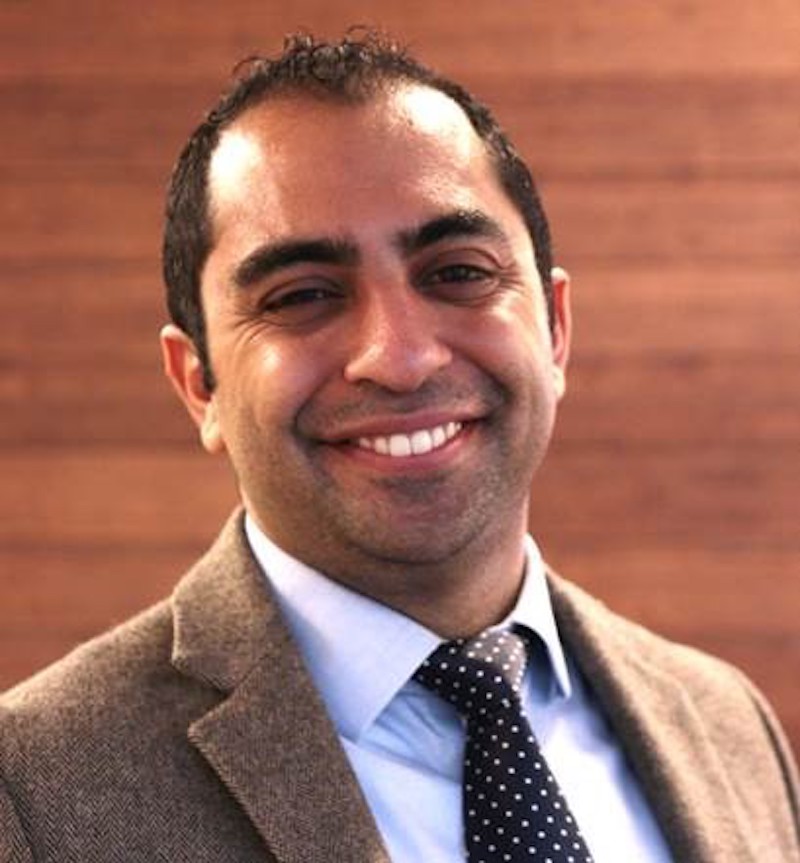HOK, the global design firm whose healthcare practice has planned and designed numerous healthcare facilities, has appointed Andrew M. Ibrahim, a medical doctor whose education included architectural training, as its chief medical officer.
Ibrahim, MD, MSc., is a resident surgeon at the University of Michigan, and serves on AIA’s Design and Health Leadership Group. While at Case Western Reserve University, where he received his undergraduate and medical degrees, Ibrahim took a year of coursework at London’s Bartlett School of Architecture.
He has also received training in healthcare delivery and policy as a Crile Fellow at Princeton University, a Doris Duke Fellow at Johns Hopkins Hospital, and as a Robert Wood Johnson Clinical Scholar at Michigan.
HOK claims to be one of the first AEC firms to hire a chief medical officer. (According to his LinkedIn page, Ibrahim has been HOK’s chief medical officer since February, although the company only released that news yesterday.) “In an era of hospital megamergers and value-based care, Dr. Ibrahim’s expertise in healthcare policy and clinical innovation will be instrumental in helping our teams guide clients through how vertical and horizontal integrations can positively affect patient care,” says Anthony Roesch, AIA, director of HOK’s global Healthcare Consulting group.
Ibrahim will use his expertise in surgery, architecture and clinical care delivery models to collaborate with HOK’s teams of medical planners, designers, and consultants.
“My experience has taught me that everything we build and design—schools, stadiums, airports, skyscrapers—has enormous potential to improve population health and wellness. As such, I deliberately collaborate across a breadth of academic and private sectors,” Ibrahim wrote on the website surgeryredesign.com. where he highlights his academic research and writing.
Related Stories
| Nov 27, 2013
Wonder walls: 13 choices for the building envelope
BD+C editors present a roundup of the latest technologies and applications in exterior wall systems, from a tapered metal wall installation in Oklahoma to a textured precast concrete solution in North Carolina.
| Nov 27, 2013
University reconstruction projects: The 5 keys to success
This AIA CES Discovery course discusses the environmental, economic, and market pressures affecting facility planning for universities and colleges, and outlines current approaches to renovations for critical academic spaces.
| Nov 26, 2013
7 ways to make your firm more successful
Like all professional services businesses, AEC firms are challenged to effectively manage people. And even though people can be rather unpredictable, a firm’s success doesn’t have to be. Here are seven ways to make your firm more successful in the face of market variability and uncertainty.
| Nov 26, 2013
Design-build downsized: Applying the design-build method in an era of smaller projects
Any project can benefit from the collaborative spirit and cooperative relationships embodied by design-build. But is there a point of diminishing return where the design-build project delivery model just doesn't make sense for small projects? Design-build expert Lisa Cooley debates the issue.
| Nov 25, 2013
Electronic plan review: Coming soon to a city near you?
With all the effort AEC professionals put into leveraging technology to communicate digitally on projects, it is a shame that there is often one major road block that becomes the paper in their otherwise “paperless” project: the local city planning and permitting department.
| Nov 22, 2013
Kieran Timberlake, PE International develop BIM tool for green building life cycle assessment
Kieran Timberlake and PE International have developed Tally, an analysis tool to help BIM users keep better score of their projects’ complete environmental footprints.
| Nov 20, 2013
Architecture Billings Index slows in October; project inquiries stay strong
Following three months of accelerating demand for design services, the Architecture Billings Index reflected a somewhat slower pace of growth in October. The October ABI score was 51.6, down from a mark of 54.3 in September.
| Nov 19, 2013
Pediatric design in an adult hospital setting
Freestanding pediatric facilities have operational and physical characteristics that differ from those of adult facilities.
| Nov 18, 2013
6 checkpoints when designing a pediatric healthcare unit
As more time and money is devoted to neonatal and pediatric research, evidence-based design is playing an increasingly crucial role in the development of healthcare facilities for children. Here are six important factors AEC firms should consider when designing pediatric healthcare facilities.
| Nov 18, 2013
Lord Aeck Sargent opens metro D.C. office, updates brand
Architecture, design, and planning firm unveils its sixth office, plus a new visual identity system and website
















